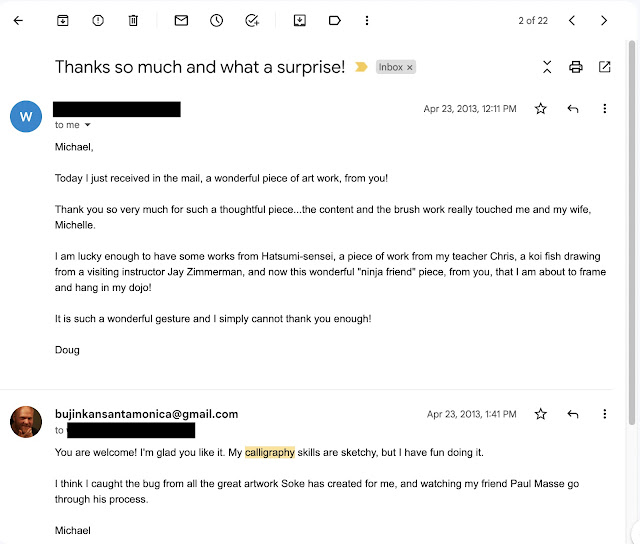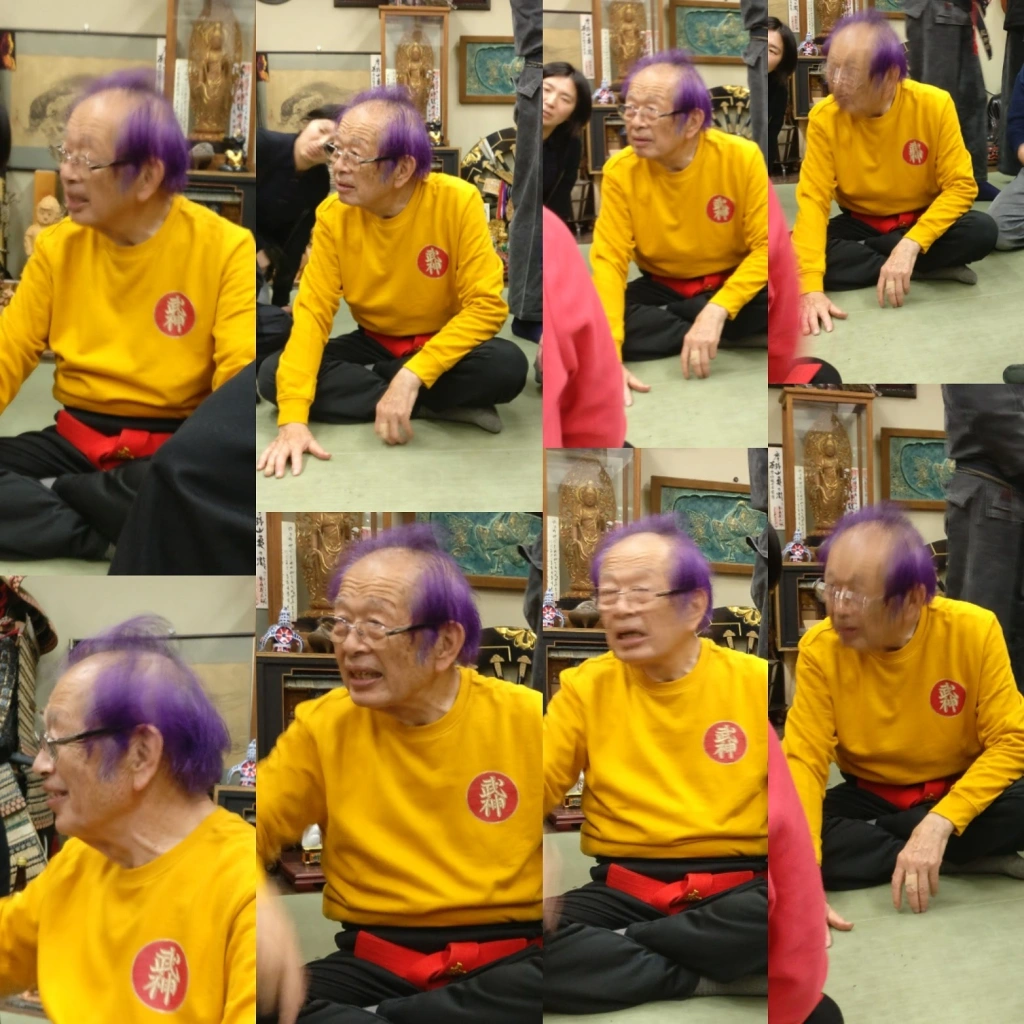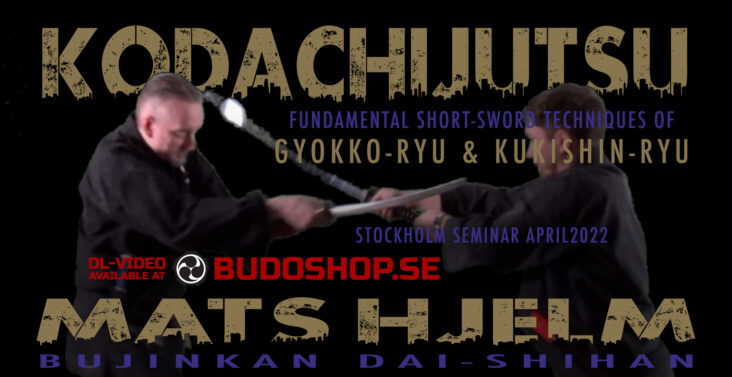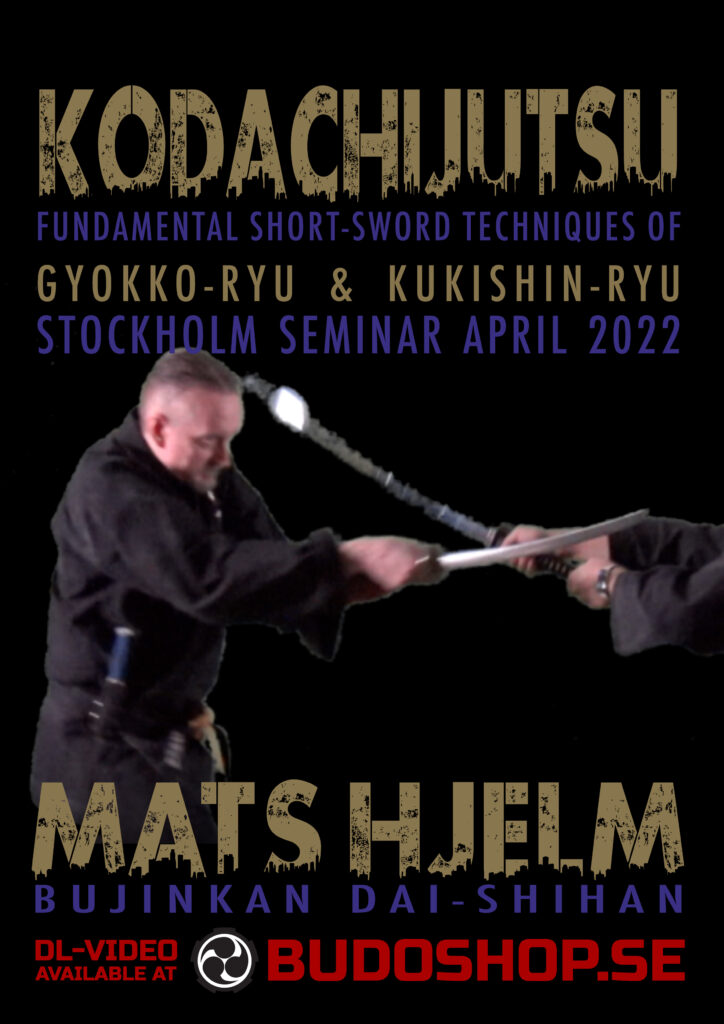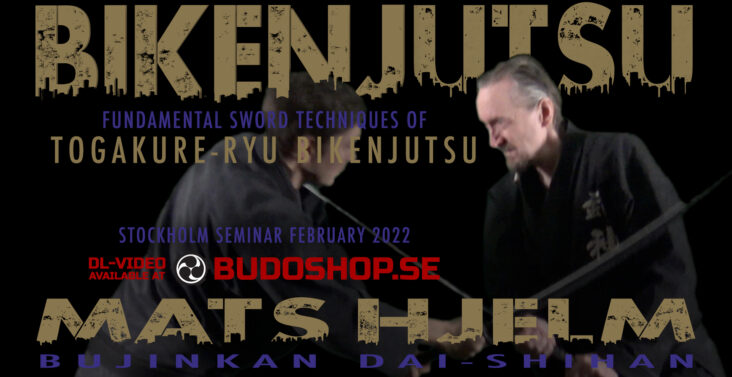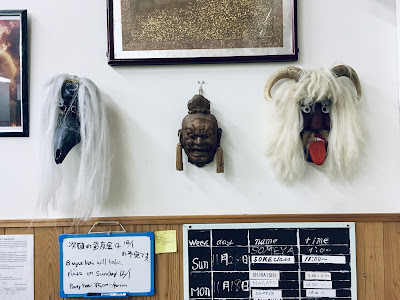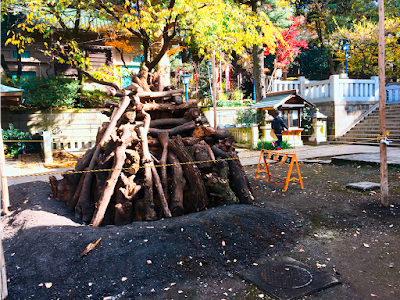From Bujinkan Santa Monica by Michael
 |
Michael in Leandro Erlich's "The Classroom" at 森美術館, photo Michael Glenn
|
I probably prepare more than most Bujinkan teachers. In fact, I spend 1-2 hours before every training session setting my lesson plan. But when Hatsumi Sensei made me a Daishihan, my prep changed.
I had 5 steps before there were two big changes. Step one was easy for me, but step seven I didn’t even know about until recently. Let’s talk about the easy change first.
One: It starts with a Bujinkan theme
As you know, Soke used to set yearly themes for the whole Bujinkan to follow. This made it easy to decide what to study every class. For example, If the theme was Gyokko Ryū, we could study the techniques and strategies from that school.
But one Fall night in 2017 I showed up to the Bujinkan Honbu Dojo in Japan and change was in the air. Hatsumi Sensei’s wife was ill and Soke had made the difficult choice to move her into a care facility. He sat in front of the Kamidana and said a private prayer at his family shrine.
Then he began class talking about change. He told us,
We have lots of Daishihan around the world now. Being able to change is the way of living. Our Tradition continues because it changes. It’s the same feeling as mutōdori. People change as they get older. Now is the time for the Daishihan to take the Bujinkan into the future.
Little did I know I would feel that weight of taking the Bujinkan into the future in less than an hour.
It happened right after the break. Hatsumi Sensei sat on the floor as they cleared away his ink and brushes. Then he looked at some of the Daishihan and said, please nominate anyone you think is worthy to be a Daishihan. Two of them immediately pointed at me.
I was relaxing on the mat behind Soke, so he turned quickly to see who they were pointing at. His face lit up when he saw me and said, “Ok!” I think he noticed my shocked expression because he smiled and quickly called Furuta-San over to talk to me.
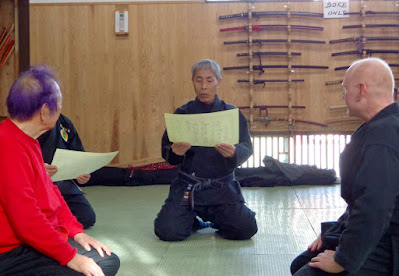 |
Senou Sensei reads Michael Glenn's Daishihan certificate. photo Peter Crocoll
|
In the following class on Sunday Hatsumi Sensei made the formal announcement and presented me with the certificate in front of the whole dojo. I bowed and then Soke said to everyone,
There is a time for these things and when the time is right they should be given.
He continued,
Next year is the start of a new Bujinkan. I started Togakure Ryū with Takamatsu Sensei in Showa 33 (1958). But I hadn’t been training long. But Takamatsu gave it to me to grow into it. Please think about these Daishihan not as coming from me, but from Kamisama. To make a community of great people.
The rest of my trip was filled with thoughts of what did it all mean? One thing it meant when I got back home was that I still had to teach my classes. But Hatsumi Sensei was no longer setting clear themes for us to follow.
I decided it was my responsibility to set themes for my dojo. So far, this has been easy for me. I basically decide what subject I'd like to do a deep dive on and set the theme accordingly. My current theme is Juppō Sesshō and we are using a variety of weapons to explore this.
Two: Bujinkan students are the focus
When preparing to teach a Bujinkan class I must consider what my students need. I anticipate which students will be there that day and what I think will help them the most. Some are beginners, some are advanced and they all need different things from me.
Three: Review the Bujinkan 伝承 Denshō
Knowing the theme enables the next step where I review the 伝承 Denshō. I do this to get as close to the original forms and traditions as they were passed down to Hatsumi Sensei. This step is tricky, because translations and copies of the kata are not always accurate.
I use several trusted sources and compare and contrast them to get as close as I can to the “proper” form. I use multiple translations because each one has a different flavor depending on the pedigree of the translator. Then, I even do my own translation to confirm. This takes a long time.
Four: Hatsumi Sensei's Books
Next, I consult Hatsumi Sensei’s books. In a recent class about the use of jūji sabaki and the jūtte, I have 3 different books with 3 different approaches to the same kata. I compare them with the Denshō to try to get as close as possible to a “kihon” version of the kata.
In each book, the version of the kata that is shown will differ depending on the era the book was written. Or maybe Hatsumi Sensei had a specific focus for that book. I bring that all together with the next step.
Five: Hatsumi Sensei's Videos
After I get the steps down in my class notes, I watch Hatsumi Sensei’s videos. We are lucky that Soke has made a lot of videos. Over the years, I have made notes about where a kata appears in a video so I can fast forward to the exact moment it was shared. Again, the same kata will be presented differently depending on the era and the focus on the day the video was made.
Six: My Personal Bujinkan Training Notes
From here, I reflect on my own personal experience and training notes. In normal years, I would make 3 trips to Japan every year. This worked out to about 6 weeks of training with roughly 2-3 classes every day.
This means that there is a good chance I studied any particular kata with Soke or the Japanese Shihan in Japan. I made many detailed notebooks from these studies. Reviewing these notes will trigger a specific memory or insight that will change how I teach the class.
An idea of 以心伝心 Ishin Denshin
The final step is one that I only recently realized was an essential part of how I prepare for class. This is the idea of 以心伝心 ishin denshin, a direct heart to heart communication between teacher and student. I received this from Hatsumi Sensei.
And I feel like I just woke up to my responsibility as a Daishihan when I discovered this next step.
Seven: What would Soke do?
What is the best way for me to convey Soke’s feeling to my students? This is the final step of my preparation for Bujinkan training. When he awarded me the Daishihan certificate he said,
This year is the 50th anniversary of the creation of the Bujinkan dojo. During this time, there were a lot of people out there who don’t understand what real budo is. And teaching without knowing real budo. Recently, I have been teaching mutōdori and this is 上層部 Jōsō-bu, the highest echelon or essence of budo. Some people understand it and some don’t, but it’s very important.
Who can say they understand Hatsumi Sensei's movement? I don't make any claims. But what I can do is try to share the feeling I got from him.
Like the time I tried to grab him and he disappeared. Or the time when he struck me with one finger, moving a bone behind my larynx and I was hoarse for a week. He thought that was quite amusing... Or another time when he threw me on the mats in Ayase and I blacked out. I came to with his face over mine, laughing again.
He gave me a feeling too when he made me a Daishihan. He told us,
It’s important to transmit these things by word of mouth and in person. The Daishihan can teach people how to live around the world. The gokui of mutōdori is really nothingness and very pure. I feel fortunate that I could teach people up to Daishihan level and they can now take over.
This is the future of the Bujinkan right in this room.
I didn't know it that day, but his words still guide me many times a week as I go through these steps to prepare for class. I made a video about all of these steps called Bujinkan Kuden: How I Prepare for Class with the 十手 Jutte if your curiosity drives you to dive deeper.
…










